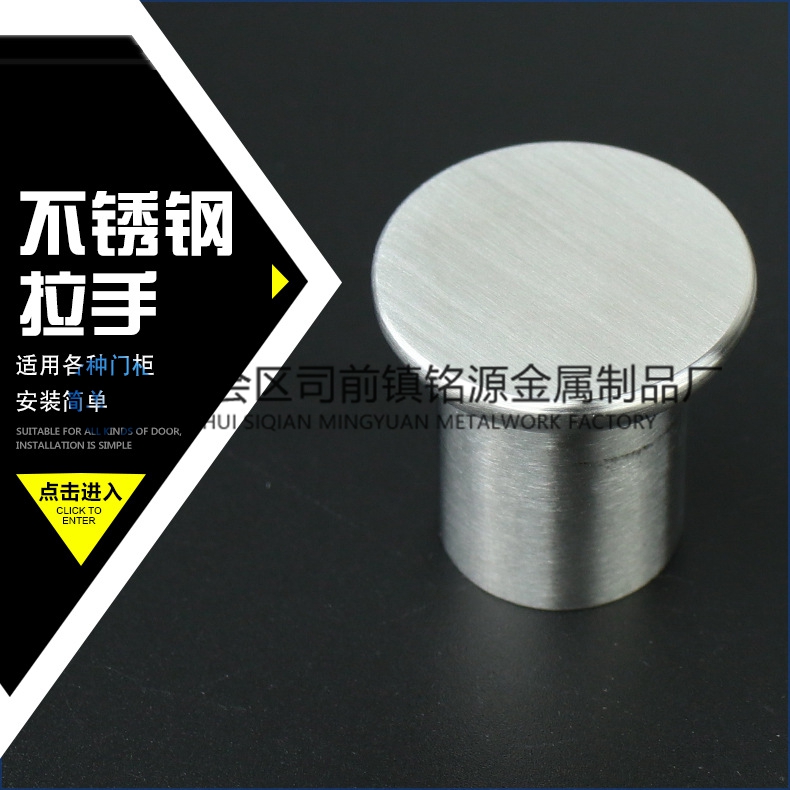What should be paid attention to when processing in Jiangmen stainless steel factory
I. processing area:
The processing area of stainless steel parts shall be relatively fixed. The platform of the stainless steel processing area shall adopt the blocking method, such as laying rubber pad, etc. The fixed management and civilized production of stainless steel processing area should be strengthened to prevent damage and pollution to stainless steel parts.
II. Selection of tool material:
Due to the large cutting force and high cutting temperature when machining stainless steel parts, the carbide with high strength and good thermal conductivity should be selected as far as possible. When grinding the front face, the roughness value should be small. In order to prevent chip sticking to the cutter, the front and back surfaces of the cutter should be carefully sharpened to ensure a small roughness value, so as to reduce chip outflow resistance and prevent chip sticking to the cutter.
III. cutting fluid selection shall be appropriate:
Because stainless steel is easy to produce poor adhesion and heat dissipation, it is important to select cutting fluid with good adhesion and heat dissipation in boring.
IV. blanking:
Cutting of stainless steel parts shall be made by cutting or plasma cutting, sawing, etc.
1. Shearing: during shearing, it shall be blocked from the feeding bracket, and the hopper shall also be paved with rubber pad to prevent scratches.
2. Plasma cutting: after plasma cutting, the cutting slag shall be cleaned. When cutting in batches, the finished parts shall be arranged out of the site in time to prevent the workpiece from being stained by the cutting slag.
3. Sawing and blanking: when sawing and blanking, the clamping shall be protected by rubber. After sawing, the oil stain and residue on the workpiece shall be cleaned.

V. machining:
When machining stainless steel parts, such as turning and milling, attention should also be paid to the protection. After the operation is completed, the oil dirt, iron chips and other sundries on the surface of the workpiece should be cleaned.
Vi. forming and processing:
In the process of rolling and bending, useful methods shall be adopted to prevent the formation of scratch and crease on the surface of stainless steel parts.
VII. Riveting:
When assembling stainless steel parts, it is necessary to prevent forced assembly, especially flame proofreading and installation. If plasma cutting is temporarily selected in assembly or manufacturing process, barrier method shall be adopted to prevent the slag from polluting other stainless steel parts. After cutting, the cutting slag on the workpiece shall be cleaned. VIII. Welding:
Before welding stainless steel parts, it is necessary to carefully remove oil, rust, dust and other sundries. Argon arc welding shall be selected as far as possible during welding, and small current and fast welding shall be selected during manual arc welding to prevent swaying. It is strictly prohibited to start arc in non welding area. The ground wire shall be properly oriented and firmly connected to prevent arc scratch. Anti splashing measures (such as brushing white ash) shall be adopted during welding. After welding, use stainless steel (carbon steel is not allowed) flat shovel to completely clean up the slag and splash.
Article source: Jiangmen stainless steel factoryhttp://www.xh-mingyuan.com
-
12-14
What drawing effects does Jiangmen stainless steel factory have
There are many kinds of stainless steel wire drawing processing, the more common are straight lines and random lines, others are corrugated and threaded.1. Stainless steel wire drawing straight lines: this kind of wire drawing treatment is very common, and the processing is relatively simple. The result of processing is that many straight lines are formed on the surface. This kind of processing ca
-
12-14
What factors affect stainless steel rusting
1. Content of alloy elements.Generally speaking, steel containing 10.5% chromium is not easy to rust. The higher the content of chromium and nickel, the better the corrosion resistance. For example, the content of nickel in 304 material is 8-10%, and the content of chromium is 18-20%. Such stainless steel will not rust in general.2. The training process of the manufacturer will also affect the cor